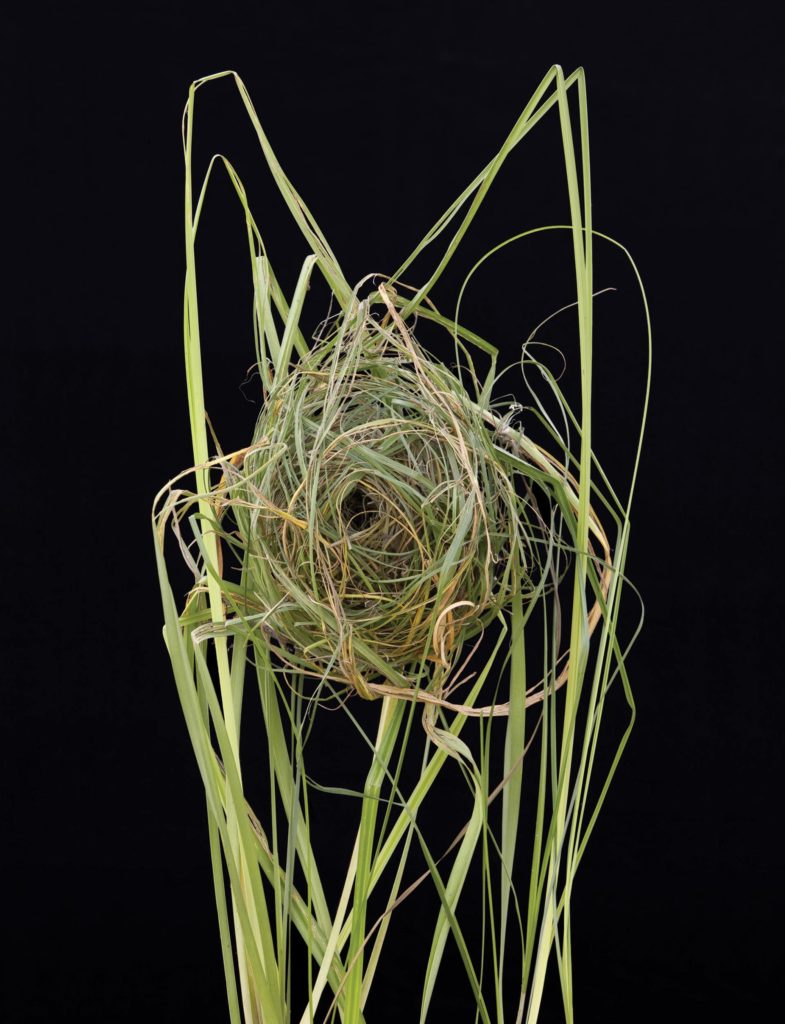Plaiting, a cultural technique that has been practiced for thousands of years, has become rare. The state vocational school for plaiting design in Lichtenfels, Upper Franconia, is unique in Europe, where even the ecologically valuable pollarded willows have largely disappeared. This makes the exhibition All Hands On: Plaiting at the Museum of European Cultures in Berlin-Dahlem all the more welcome. The exhibit conveys the fascination and diversity of plaiting and “shows that historically evolved knowledge and modern innovations are interwoven.”

Not all ecological products need to be reinvented. Sandals from Esparto, Spain, around 1860. © Staatliche Museen zu Berlin, Museum Europäischer Kulturen / Christian Krug.

Backpack Tarzan by the wickerwork designer Rosa Gies, Upper Franconia, Bavaria, 2020. © Staatliche Museen zu Berlin, Museum of European Cultures / Christian Krug.
Some 200 plaited artifacts from the museum’s collection and a variety of loaned items are on display at the exhibition, which is divided into four thematic areas: Man, Protection, Material and Pattern. Some of the exhibits are linked to interactive stations, “which are intended to inspire young and old for the intangible cultural heritage and to make the fascination for handmade things ‘graspable.’” Contemporary and historical plaiters are portrayed. The exhibits show how, for example, plaited hats, shoes, baskets and chairs serve people. A wicker chair from the passenger cabin of the zeppelin LZ 120 Bodensee from 1919 bears witness to an era “when the advantageous qualities of wickerwork – namely its stability, lightness and flexibility – were still in demand in aviation.” Totally different: the Living Root Bridges from India are made of interwoven aerial roots of the rubber tree, which is currently also being researched in Europe in the field of construction botany.

Braiding connects us with nature. Nest of a field mouse. © Ingo Arndt Photogaphy.
All Hands On: Plaiting also extends the view beyond the European context and addresses the fact that wicker materials such as sisal and rattan also reached Europe in the past as colonial raw materials. Finally, a wide range of exhibits shows how various masterful plaiting techniques can be used to create numerous patterns. Mastery typically requires many years of experience because plaited artifacts are often far more complex than they appear at first glance.
Contemporary artistic positions add further depth to the topic. Syowia Kyambi from Nairobi encountered the theme of plaiting in the context of her grappling with the colonial era. Nathalie Miebach from Boston, Massachusetts translates scientific data from the fields of ecology, climate change and meteorology into three-dimensional plaited structures. Muriel Gallardo Weinstein interweaves various materials to construct forms that allude to the totality of reality and the diverse impressions it evokes. Olaf Holzapfel designed the commissioned work The Woven Garden as a walk-in spatial sculpture for the exhibition.

Interactive station Weaving means deciding!, 2021. © Staatliche Museen zu Berlin, Museum Europäischer Kulturen / Christian Krug.
Visitors are invited to become active themselves, for example, to weave nests, to plait protective sheaths for bottles or to interweave themselves with other tales. All Hands On is thus not only highly informative, but also invites its visitors to become enthusiastic about the versatility of plaiting. A comprehensive program of events and educational opportunities, including open workshops and creative workshops, complements the exhibition throughout its run.
- —
-
Museum of European Cultures
Arnimallee 25
14195 Berlin-Dahlem
Germany - Begins May 24, 2022 and continues indefinitely
Opening hours: Tuesday to Friday, 10 am to 5 pm; Saturday and Sunday, 11 am to 6 pm - Link